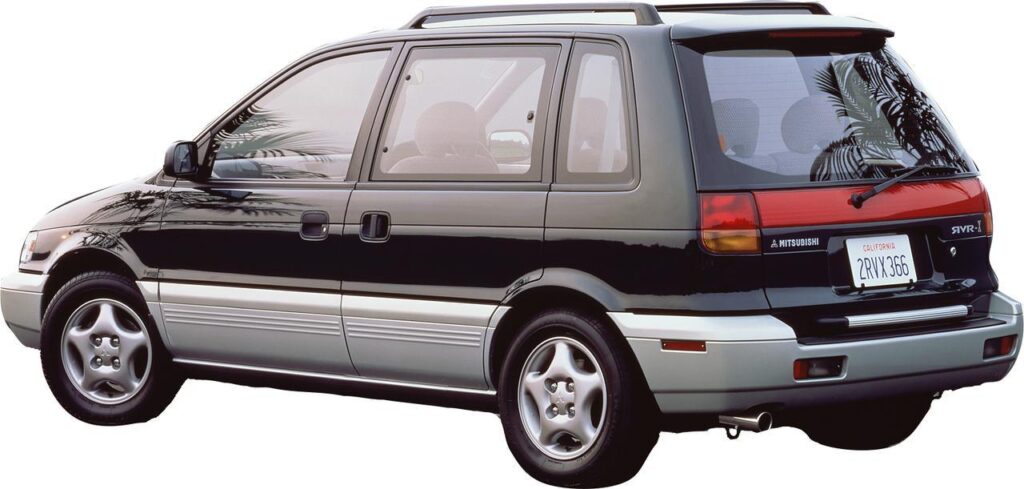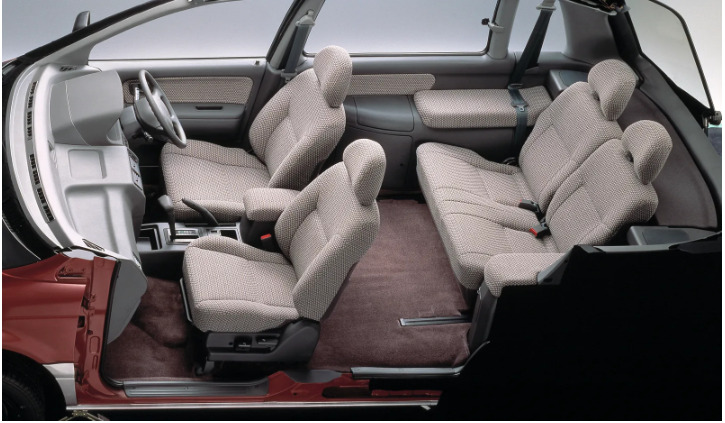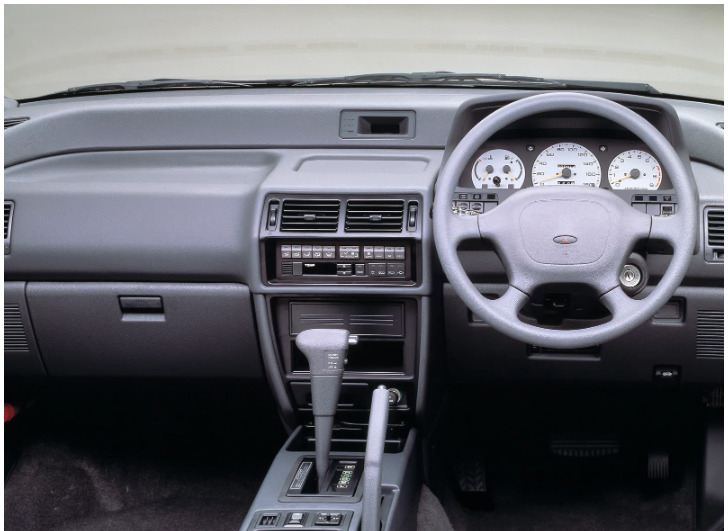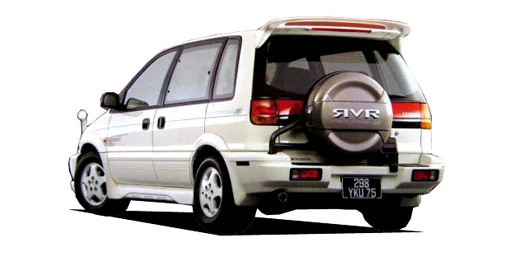In 1991 Mitsubishi launched one of the quirkiest cars ever coming from Japan, the RVR. RVR standing for Recreation Vehicle Runner. It is the go-anywhere vehicle though the execution has been special. A MPV bodyshape with a slidedoor for the rear passengers (of which there can be only two) on only one side of the car. And this is mixed with off-road characteristics. And the variants to be introduced later on in the lifespan of this model were even more interesting.
From 1992 the Sportsgear grade became available which had a wider body and a spare tire on the rear hatch. That rear hatch also changed from a top hinged type to a side hinged type. With the front also having a front grille guard, it made the vehicle a lot more off-road looking. With the introduction of the Sportsgear grade the 4G63 2.0 liter engine was also upgraded from 140 horsepower to 160 horsepower.
A year later a new grade with new bodystyle called the Open Gear was introduced. Unique in its kind, it is a 2-door MPV with automatic sliding roof to make it a targa open top car. The wheelbase was same to that of the other RVR variants, but as the slide door has disappeared, the front doors were made longer for better proportions. The Open Gear was available in three two tone colors, in which the under half and top backside were always silver color.
A new surprise came in 1994 with the addition of the 4G63 turbocharged engine also found in the Lancer Evolution. Although being a bit downtuned, it still made 230 horsepower for the manual transmission version and 220 horsepower with the automatic transmission. The X3 grade for the narrow body, Super Sportsgear for the wide body and Super Open Gear for the open version all got this engine.
The following years went by without any major change, but in 1997 the Hyper Sportsgear trim was added. Newly designed aero parts were used; a new front bumper, side skirts and a big rear spoiler. The interior got special Recaro seats. The Hyper Sportsgear could only be had in four wheel drive and with two different engines. The normally aspirated 4G63 (as Z grade) and the same engine but turbocharged (as R grade). The Hyper Sportsgear R got additional horsepower totaling 250 horsepower for the manual and 230 horsepower for the automatic. A total of three colors were available: black, white and turquoise.
The Hyper Sportsgear was really a final ‘ultimate’ grade for the 1st generation as by end of 1997 the second generation was introduced. At this time there were two body variants. The GDi was the more regular car with all body panels in body color and the Sportsgear as the more adventurous, with the bottom half of the car being silver (similar to the eK Active), a different styling for the bumpers, different suspension setup and the optional spare tyre on the back.
At the time of start of sales of the second generation RVR Sportsgear, there were 3 grades. X, X2 and X3. The X and X2 had a 2.4 liter engine with 165 horsepower and only came with a 4-speed automatic. The Sportsgear X3 had the 4G63 turbocharged engine with 250 horsepower for the 5-speed manual and 230 horsepower for the 4-speed automatic. It also got different equipment such as the pattern on the seats and the Xenon headlights.
The RVR Sportsgear never was a big success due to its uniqueness. While it had an extremely flexible interior with the rear seats that could slide over a long distance and the possibility to make a large loading space, the first and second generation of the RVR could only carry a maximum of 4 people including the driver. Most customers either went for a full MPV, actual off-road vehicle (SUV) or a sportscar. The RVR Sportsgear combined all the characteristics of these three types of vehicles in a one vehicle, so it is the ultimate car for a single car garage.
Click on the picture below to see all RVR Sportsgear versions per year and detailed specifications such as weight, new price and equipment for each version in the Goo-net.com catalog.










